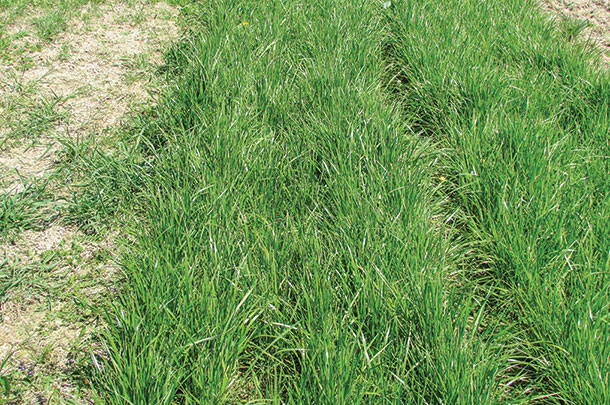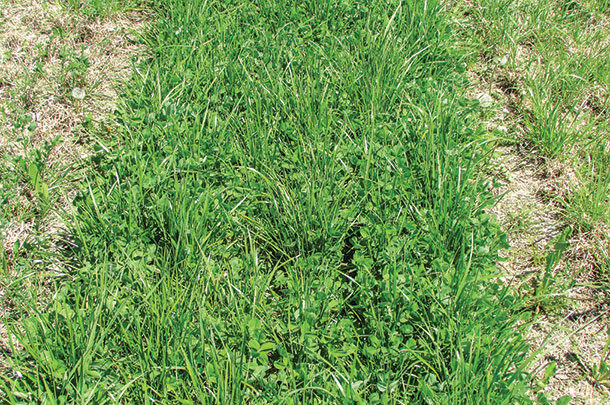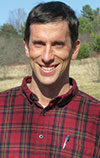My arctic parka, for example, disappeared for more than a decade. (I am not sure how many geese it took to make this jacket, but it was very warm – and I thought it might be the key to avoiding hypothermia in Vermont.) My wife, a very organized person, insisted that she had not seen it for years and that she did not donate it.
Despite several inquiries, my mother (also a very organized person) could not provide information regarding its whereabouts. How this gigantic garment could have disappeared without the organizers’ notice was incomprehensible.
What joy flooded my inner being when my mother called and said, “Your father was just going to the dump and loading up a bunch of bags from the barn. There was a large squishy bag that we decided to look in, and guess what was in it?” Well, there was no need for Christmas presents that year.
You might occasionally hear of a plant breeder or agronomist “rediscovering” a crop that has fallen entirely out of use. It might be ancient grains propagated from kernels discovered in the tomb of an Egyptian pharaoh or something more hip and gluten-free like quinoa or amaranth.
In the forage realm, meadow fescue was rediscovered in the U.S. more than a decade ago when a farmer in the Driftless Region of Wisconsin had some grass in his pastures he liked – but wasn’t sure what it was.
A USDA-ARS plant breeder, Michael Casler, went to the farm and determined that it was meadow fescue – a species that came west with the settlers more than 100 years ago.
Casler also collected some seed and developed it into a variety called “Hidden Valley.” Interestingly, meadow fescue has been used continuously in northern Europe and there are many named varieties, many of which have since begun to be sold in the U.S.
Where does meadow fescue shine?
My wife recently commented on how beautiful the wildflowers were in a local hayfield. She was absolutely right; the buttercups and oxeye daisies were visually beautiful, but they do not make beautiful hay.
(No, I did not ruin the moment by launching into a discussion about forage quality.) So what makes beautiful hay/haylage? The answer is: a consistent balance of yield, quality, palatability and persistence.
While crude protein is often one of the first numbers we look at when trying to understand the quality of a forage sample, on many farms it is not nearly as important as fiber levels and fiber digestibility.
While tall fescue has a slight edge on yield, meadow fescue has been found to have superior neutral detergent fiber digestibility and is much more palatable as a pasture species.
 Comparing the first-cut seeding-year forage quality data I have from a local farm last year, the 30-hour neutral detergent fiber digestibility of meadow fescue was about 6 percent higher for meadow fescue than tall fescue. (The neutral detergent fiber levels were comparable at the time of the first cut: 47 to 49 percent.)
Comparing the first-cut seeding-year forage quality data I have from a local farm last year, the 30-hour neutral detergent fiber digestibility of meadow fescue was about 6 percent higher for meadow fescue than tall fescue. (The neutral detergent fiber levels were comparable at the time of the first cut: 47 to 49 percent.)
These results are similar to findings elsewhere. While 6 percent does not sound like much, all other things being equal, the improved forage-use efficiency equates to about 3 pounds more milk per cow per day on paper.
For example, a 200-cow dairy with milk at $18 per hundredweight, that works out to be $33,000 worth of additional milk. Yes, if the fiber digestibility is higher, they will eat more, etc., but most producers would be glad to deal with that “problem” if their cows are more productive and efficient.
Meadow fescue is genetically similar enough to ryegrasses that it is possible for plant breeders to cross the two species. While meadow fescue shares forage quality and palatability characteristics with ryegrasses, these species differ in that meadow fescue is useful for haylage, dry hay and pasture, while in many environments, ryegrasses are difficult to dry sufficiently for dry hay production.
While many dairy farmers make very little dry hay, some want to have a cache of high-quality hay that even a sick cow would have trouble resisting (specifically for use in their sick pen). Meadow fescue is a good candidate for this purpose.
Another major difference between the meadow fescue and the ryegrasses is that meadow fescue is extremely winter hardy, whereas the perennial ryegrass winter hardiness is highly variable among varieties, and none I have seen are comparable to meadow fescue.
If it’s so great, why doesn’t everyone plant it?
From what I can tell, the limited adoption of meadow fescue seems to be due to forage/livestock producers generally not being familiar with it and, for those averse to tall fescue, having the word “fescue” in the name inducing a negative reaction.
While fescue is not a bad word in my lexicon, there are some who have a visceral reaction to it because of the baggage it carries from toxic endophyte-infected tall fescue varieties.
For those not averse to tall fescue, the biggest comparative downside of meadow fescue is that it generally yields less than tall fescue – the reason it fell out of favor in the first place.
While meadow fescue can make decent yields of dry hay/haylage, it is stronger as a pasture grass and as a more intensively managed haylage crop. Data from the University of Wisconsin showed that while the total pasture dry matter productivity was higher for tall fescue than meadow fescue, intake was the same because of the higher palatability of meadow fescue.
Data from the University of Vermont and elsewhere suggests that meadow fescue yields can be very close to tall fescue yields, depending on environment and management.
Establishment and management of meadow fescue
Recommended seeding rates for meadow fescue are highly variable among seed companies, varying from 8 to 35 pounds per acre. Anecdotally, in small plots in New England, the dry matter yield of plots seeded at 8 pounds per acre is not too different from plots seeded with 12 or 35 pounds per acre.
In a mixed stand, 5 to 8 pounds per acre is a good target. As with all small-seeded crops, lower seeding rates can provide excellent results as long as seed placement is appropriate (i.e., not too deep).
In my work with meadow fescue in Vermont and New Hampshire, I have observed several other things worth mentioning about meadow fescue:
- It has excellent early season growth, even after a hard winter.
- The upright growth habit makes me think that light interception would be optimized if a broadcast seeder (e.g., Gandy or Brillion types) was used instead of a grain drill.
- In the environment of the Northeast, the foliar disease “net blotch” afflicts meadow fescue more than other species I have seen. There are some varieties with more resistance to foliar diseases, but high humidity and poor soil fertility will generally make symptoms worse.
- In mixed stands, it is a good companion for alfalfa, red clover, white clover and would likely be a good fit for birdsfoot trefoil.
As with all crops new to a particular farm, I suggest trying meadow fescue on a small scale before expanding acreage.
It is a species livestock producers should seriously consider, but it is not a panacea and will not perform the same in all environments. ![]()
References omitted but are available upon request. Click here to email an editor.
PHOTO 1: Meadow fescue with red clover.
PHOTO 2: Meadow fescue center and right, winterkilled perennial ryegrass on the left (both pictures were taken on May 18, 2016 and were seeded May 1, 2015). Photos courtesy of Daniel Hudson.

-
Daniel Hudson
- Agronomist and Nutrient Management Specialist
- University of Vermont
- Email Daniel Hudson












